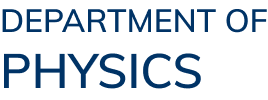Abstract
Understanding and controlling electronic instabilities in correlated oxides requires both accurate modeling techniques and reliable interaction parameters. We investigate strontium chromate (SrCrO₃), a complex transition metal oxide exhibiting strain-tunable metal–insulator transitions and competing antiferromagnetic and charge-disproportionated insulating states. Using density functional theory with Hubbard corrections (DFT + U) and with dynamical mean-field theory (DFT + DMFT), we find that tensile strain favors a Jahn–Teller distortion coupled to antiferromagnetism, while dynamical correlations can also drive proximity to a charge-ordered phase. To ensure consistency in these methods, we introduce a unified framework for calculating the screened Coulomb interaction parameter U via maximally localized Wannier functions, enabling direct comparison between linear response theory and the constrained random phase approximation. Applied to potassium copper fluoride (KCuF₃) and strontium ferrate (Sr₂FeO₄), the approach highlights the limitations of the constrained random phase approximation in entangled subspaces and the robustness of linear response theory. Together, these results advance predictive modeling of correlated materials by resolving long-standing methodological inconsistencies and elucidating competing orders in SrCrO₃.
Physics Department - All I Need is U: Modeling Strain-Driven Transitions in SrCrO₃ and computing Consistent Interaction Parameters
Physics Department - All I Need is U: Modeling Strain-Driven Transitions in SrCrO₃ and computing Consistent Interaction Parameters
2:30pm - 4:00pm
Room 4504, Academic Building, HKUST (Lifts 25-26)
Event Format
Speakers / Performers:
Dr. Alberto Carta
Paul Scherrer Institute
Recommended For
Faculty and staff, PG students
Language
English
Organizer
Department of Physics
Contact
